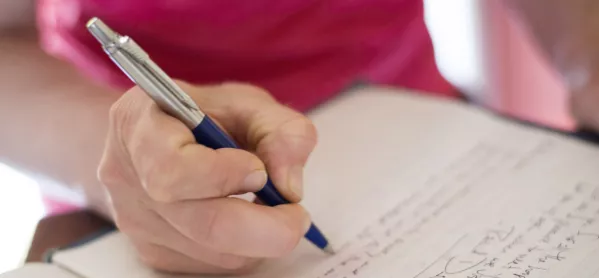I’m as fond of a nice set of differentiated worksheets as the next person.
I love jazzy powerpoints, carousel lessons, a cheeky bit of drama and, yes, I’ve spent a lot of my career laminating miscellaneous lesson props, or chopping up bits of paper and putting them in envelopes.
If a lesson isn’t going well, or if the students aren’t learning enough, I’ve generally assumed it’s my fault, and that the lesson I’ve prepared just isn’t exciting.
Quick read: Three ways to really challenge key stage 3 students
Quick listen: ‘Phonics is crucial - even for those who won’t ‘get’ it’
Want to know more? Treating my GCSE class like undergraduates boosted results
Except…over the past few years, there have been a few times when I’ve questioned why I was putting in more effort than the students.
Why it was me who was staying up late at night to work. Why it was me who was trying to balance entertainment with just the right amount of learning.
A sneaking suspicion started to creep in. I began to notice that the unprepared lessons where I just had to wing it were often the best.
Maybe the projector had broken, or there had been a fight in the playground at breaktime, or I was just too tired to teach my energetic group-work lesson. Whatever it was, the sessions when I didn’t have any gimmicks and instead just focused on the students were the most effective.
Into the sea
Three years ago, I abandoned a creative writing lesson that just wasn’t working. Instead, I started modelling a story that I was writing about a group of teenagers trapped in the middle of the ocean on top of a giant jellyfish.
My students loved it and they made considerably more progress in the lesson than they had been in previous ones.
So, I continued in the next lesson. I simply projected my computer screen on the board and wrote alongside them.
The idea of teachers promoting reading for pleasure by reading novels alongside their students, or by talking about books they’ve read, is accepted practice.
But the promotion of writing for pleasure is not particularly common in schools. Yet. Cressida Cowell started off her role as children’s laureate by encouraging “free writing Fridays”, or the idea of allowing students time to simply write.
The ntion of teachers modelling their own passion for writing alongside their students is still rare.
Part of the reason is that not many adults write for pleasure in their spare time; most people don’t consider writing to be a relaxation activity in the same way as they do reading.
As adults, when we write, it is generally for a purpose: letters, essays, reports. We don’t find it particularly fun because we associate it with work. It’s also hard.
It’s important, however.
The point at which my students started taking their own writing seriously was when they saw me doing it, too.
We know modelling is useful, but writing is a process rather than just a finished product, and many of the problems students face when writing are much more easily overcome if they can watch how they could overcome them.
So, here are my tips.
What worked
- Engaging students by publicly completing the same task as them.
- Improving my own subject knowledge by better understanding the challenges they faced with the task.
- Carrying out easy Assessment for Learning (AfL) through whole-class feedback. I looked for common errors in students’ work, and we tackled these at the start of each lesson. I simply wrote an error-filled paragraph in my work for the class to critique. They then identified and improved those errors in their own work during the lesson.
What was challenging
- I wasn’t able to ever really able to just write in the lessons, because I still had to deal with individual students. I had to set up the process just as much as you would ordinarily plan a lesson.
- Normally, during creative writing time, you manage to catch up on some marking. You can’t do that if you’re writing alongside your students, but this is offset by the success of the AfL starters.
I am well aware that writing alongside your students is probably just another lesson gimmick, but it is one that has improved my students’ writing more successfully than anything else I’ve tried. And it has also resulted in the publication of my book, Jelly.
Clare Rees is head of English at a school in Berkshire and the author of Jelly, a young adult novel partly written alongside her students. She tweets @ClareRees3

